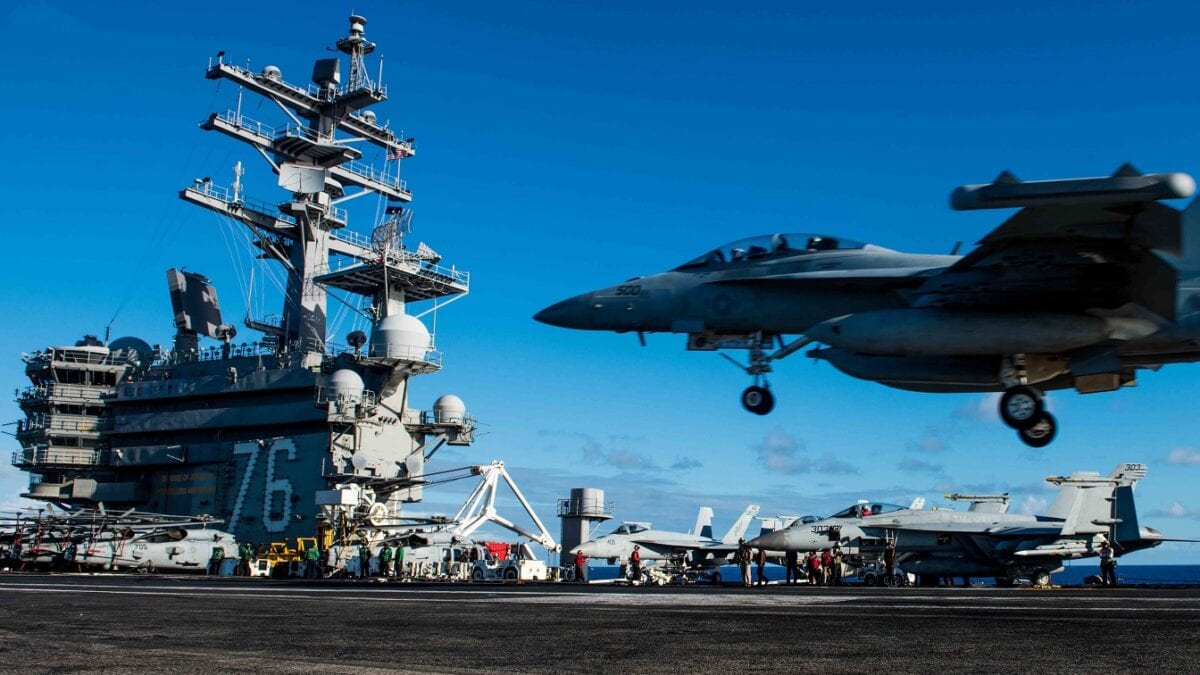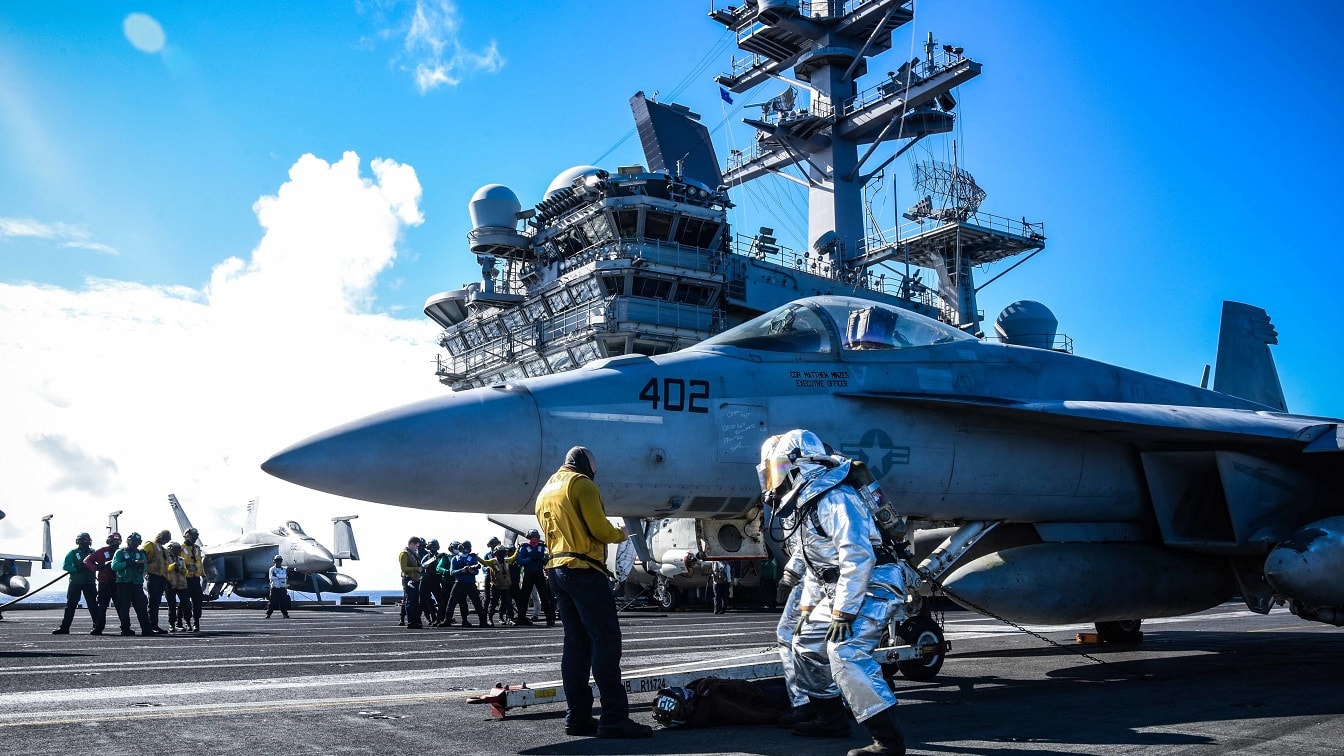For the first time since 2018, the USS Ronald Reagan has made a port call in South Korea, where the aircraft carrier is present for strike group exercises with the Republic of Korea navy. North Korea is evidently not happy about this, as the Hermit Kingdom launched a short-range ballistic missile in response to the drills.
U.S. and ROK ships sailed off the east coast of the peninsula on Sept. 26, near the port of Busan. The exercise is robust, with the Ronald Reagan, a cruiser, and destroyers interacting with ROK vessels for joint operations. Fighter jets and helicopters from both navies are also flying patrols.
The four-day exercise is designed to show “powerful resolve to respond to North Korean provocations and the firm resolve by the Korea-U.S. alliance for the sake of peace and stability on the Korean Peninsula,” according to the Navy Times. The last time these naval drills were held was in 2017. The Covid-19 pandemic and negotiations with the North had caused their suspension or postponement in the years since.
“We’re excited to return to Busan. Our presence and commitments to the Republic of Korea and the Indo-Pacific region are not new, and visits like this are part of our routine operations in the region that have helped maintain peace for more than 70 years,” Rear Adm. Buzz Donnelly, commander of Carrier Strike Group 5, said in a navy news release.
A History of Duty
North Korea fired its missile from near the Taechon area of North Pyongyang Province. It traveled around 370 miles at an altitude of 37 miles before diving into the sea off the east coast of the peninsula. This was the North’s first missile test in four months, and it had enough range to hit the Ronald Reagan.
The USS Ronald Reagan is the ninth carrier of the nuclear-powered Nimitz class. It is permanently deployed out of Yokosuka, Japan where it often does exercises with the Japanese Maritime Self-Defense Force. The Ronald Reagan carrier strike group is assigned to the U.S. 7th Fleet area of operations in the Indo-Pacific region. This is the navy’s largest forward-deployed fleet.
The Ronald Reagan was also sent to the Middle East, where it oversaw the withdrawal of U.S. forces from Afghanistan in 2021.
The super carrier was laid down in 1998, launched in 2001, and commissioned in 2003. The ship was deployed to fight against Iraq and Afghanistan in Operation Iraqi Freedom and Operation Enduring Freedom.
An Enduring Commitment
Nicknamed the “Gipper,” the ship’s motto is “peace through strength.” The carrier has two nuclear reactors with four engines and four propellers. Its top speed is over 30 knots, and it has four aircraft elevators and four catapults. The Ronald Reagan is 1,092 feet long, and the carrier displaces 100,000 tons when fully loaded.
The Ronald Reagan has at least 85 aircraft and has a crew of 4,900 sailors. The carrier is armed with two Mk 29 Sea Sparrow launchers, two Rolling Airframe Missile Systems, and a Close-in Weapons System.

(June 20, 2018) An EA-18G Growler assigned to Electronic Attack Squadron (VFA) 141 lands on the flight deck of the Navy’s forward-deployed aircraft carrier, USS Ronald Reagan (CVN 76). Ronald Reagan, the flagship of Carrier Strike Group 5, provides a combat-ready force that protects and defends the collective maritime interests of its allies and partners in the Indo-Pacific region. (U.S. Navy photo by Mass Communication Specialist 2nd Class Kenneth Abbate/Released)
The Ronald Reagan is a symbol of determination in the Indo-Pacific. Sailors aboard know that their mission is laden with risk, as North Korea could be easily provoked into a conflict. While the Trump administration was willing to suspend exercises with South Korea so the president could meet directly with the North’s supreme leader Kong Jung-un, the Biden administration has shown no desire to offer any diplomatic rapprochement that includes concrete offers to North Korea. This means the Ronald Reagan will stay busy in the coming years, deploying to the waters off the Korean peninsula.
Expert Biography: Serving as 1945’s Defense and National Security Editor, Dr. Brent M. Eastwood is the author of Humans, Machines, and Data: Future Trends in Warfare. He is an Emerging Threats expert and former U.S. Army Infantry officer. You can follow him on Twitter @BMEastwood. He holds a Ph.D. in Political Science and Foreign Policy/ International Relations.

